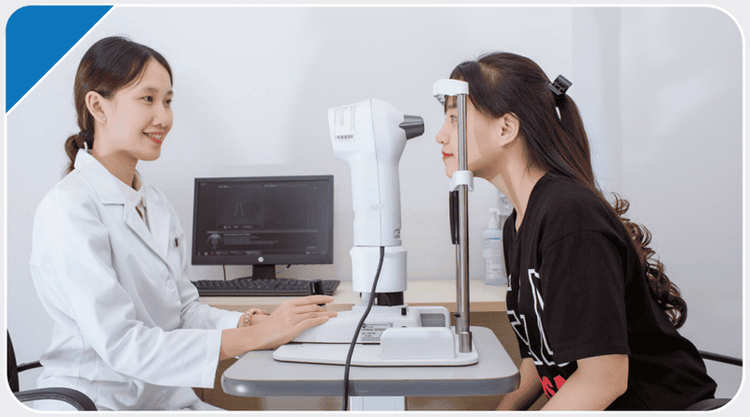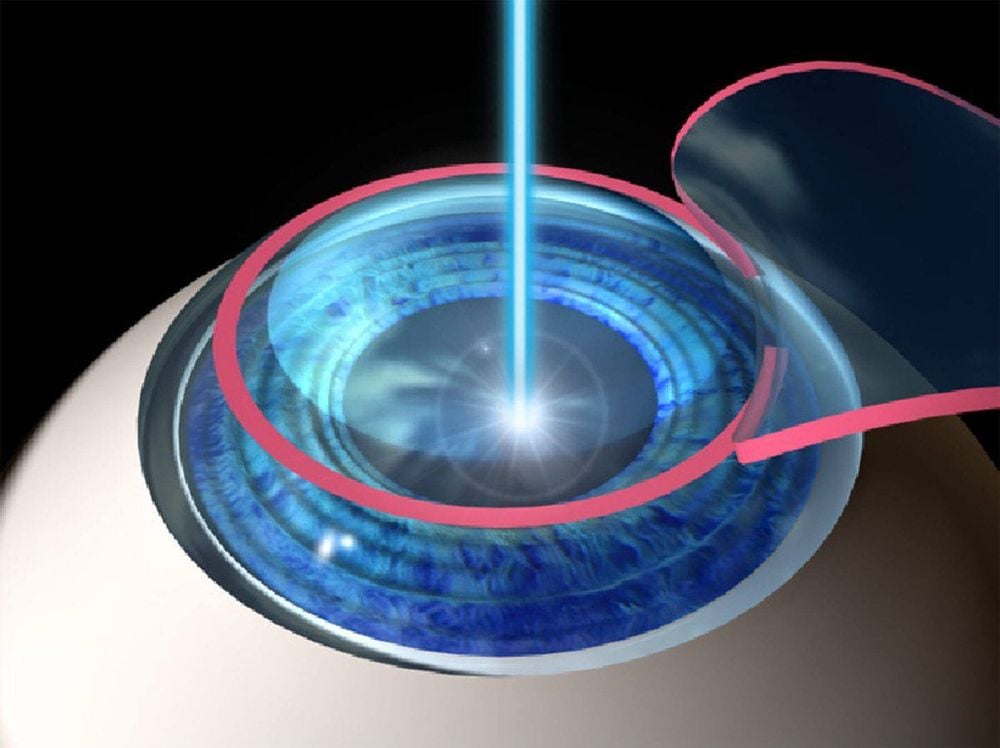This is an automatically translated article.
The article was written by Specialist Doctor II Nguyen Thai Hung - Ophthalmologist, Department of Examination & Internal Medicine - Vinmec Da Nang International General Hospital1. What is astigmatism?
Everyone has a different level of vision. In it, ideally, the eyeball is shaped like a round ball to let light in and bend evenly to help you see clearly.Astigmatism is a condition in which the eyes are not in a uniform round size. When the eye is shaped like an ellipse, light hitting the retina will be bent in one direction rather than being distributed over the entire eye. That is, only a part of the object is clearly visible, the rest around it looks blurry and wavy.
Astigmatism is often associated with nearsightedness or farsightedness. These eye diseases are collectively known as refractive errors and are all related to the curvature of the cornea. Astigmatism often occurs after contact lens procedures or eye surgery.
2. Symptoms of astigmatism
Astigmatism manifests as follows:Blurred or distorted vision Eye fatigue Headache Difficulty seeing at night.

3. Causes of astigmatism
Most astigmatism occurs early, so the cause of astigmatism is often unknown. Others occur after an eye injury, eye disease, or surgery.Also, another, more rare cause, occurs when the cornea is cones (keratoconus). It can cause astigmatism by making the cornea thinner and more cone-shaped.
Astigmatism does not happen when you read in low light or sit too close to the TV.
4. Diagnosis of astigmatism
Symptoms of astigmatism usually appear gradually. Therefore, you should see your doctor when you notice altered or limited vision. During the exam, your doctor will check how well you can see things by asking you to measure your vision. In addition, they will also use other instruments to measure your vision, namely:Phoropter: You look through a series of lenses to find the clearest vision. Keratometer/topograph: Uses a circle of light to measure the curve of the cornea. Autorefractor: Shines light into the eye and measures how it changes on the screen. This helps your doctor choose the type of glasses you need.

5. How to read eyeglasses prescription for people with astigmatism
On the glass menu will appear some letters and numbers. In which, OD means the result of the right eye, OS is the result of the left eye, and OU is the result of the vision in both eyes. The numbers are measured in diopters (a unit of measurement for the optical power of a lens):The first number is called the spherical correction: If it has a minus sign, you are nearsighted. If there is a plus sign, you are farsighted. A higher number means blurred vision. The second number is the cylinder correction: This is the number that represents the degree of astigmatism. The third number is the axis: The position of astigmatism on the cornea. For example, a prescription of “OD -1.00 x -2.00 x 155”, means that your right eye is nearsighted by 1 diopter and astigmatism is 2 diopters at 155 degrees above the cornea.
6. Treatment of astigmatism
Glasses or contact lenses can correct most cases of astigmatism. But if you only have mild astigmatism and no other vision problems, you may not need them.There are two common treatments for astigmatism:
Refractive glasses: If you have astigmatism, your doctor will likely prescribe a contact lens that is appropriate for your degree of astigmatism. If the case is more severe, you can use gas permeable rigid contact lenses called Ortho-K. Wearing contact lenses while you sleep helps reshape your cornea. You will need glasses to maintain your astigmatism correction, but not necessarily regularly. Refractive surgery: Laser surgery also helps to correct the shape of the cornea. There are two types of refractive surgery, LASIK and PRK. You should consider your current astigmatism and treatments to ensure healthy eyes without retinal problems or corneal scarring.

7. Astigmatism in children
Many babies are born with astigmatism, but it usually goes away before the baby is 1 year old. However, parents should take their children for regular eye exams starting at around 6 months of age because babies are too young to be aware of vision problems and can't speak to their parents out loud. While in the case of children with severe astigmatism, it can affect their ability to learn at school.If you are having vision problems, go to a medical facility immediately to be examined, screened for refractive errors and treated as soon as possible. Currently, Vinmec International General Hospital has vision-related service packages such as:
Refractive error screening package Cataract surgery consultation and examination package Ortho-K package
Please dial HOTLINE for more information or register for an appointment HERE. Download MyVinmec app to make appointments faster and to manage your bookings easily.
Reference source: webmd.com













